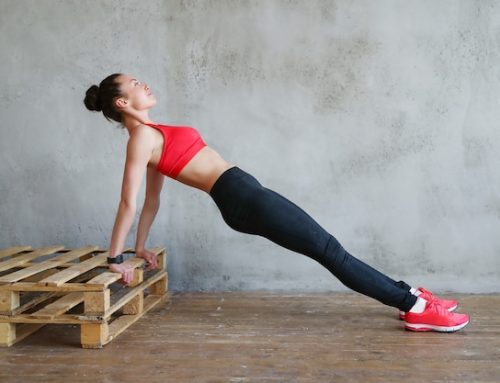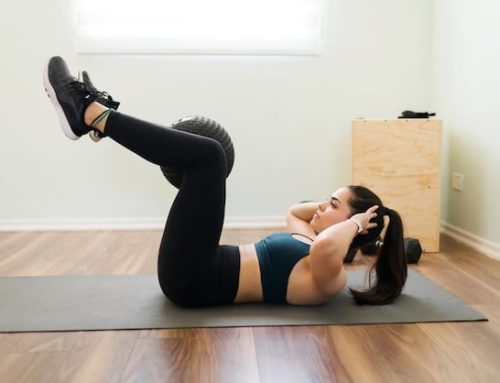The Correlation between Sleeping Position and Calorie Burn
Many people believe that the best way to burn calories is through exercises such as running, swimming, or weightlifting. However, did you know that you can burn calories while you sleep? Yes, you read that right! Your sleeping position can also impact the number of calories you burn during the night. In this blog post, we will discuss which sleeping position burns the most calories and how you can optimize your sleep to boost your calorie burn.
How many calories do we burn during sleep?
Although sleep requires much less energy than most daytime activities, it is still an active period for our brain and some other bodily functions. According to Dr Michael Breus, who runs the blog The Sleep Doctor, a 68 kg person weighing 68 kg can burn around 440 calories during a 7-hour rest period at night. The exact number of calories burned during sleep depends on the complex relationship between sleep, diet, exercise and other variables. On average, most people burn about 15% fewer calories during sleep compared to their basal metabolism during the day.
How to increase calorie burn while sleeping?
1. sleep at sufficiently low temperatures
Science shows that sleeping at lower temperatures speeds up metabolism. Lower temperatures subtly increase the effectiveness of our brown fat stores. This fat retains heat, helping to burn the remaining fat stored in the abdomen.
2. establish consistent bedtimes
When you establish a consistent sleep schedule and avoid the snooze button, you take care of hormonal regulation. This balance of melatonin and cortisol not only affects sleep time and alertness during the day, but is also stabilises fat storage.
3. get enough sleep
People who feel sluggish due to lack of sleep tend to crave food as energy and choose high-calorie foods containing sugar and fat. These foods may provide an initial burst of energy, but this does not last long and the extra calories lead to weight gain.
4 – Don’t overeat before bedtime
Some studies have shown that eating before bed can lead to weight gain. However, a more important factor seems to be the type of food you eat. If you feel hungry late at night, stay away from fast food and instead choose a light and healthy snack, such as fruit.
How Does Sleep Burn Calories?
First things first, let us understand how sleep burns calories. While you are asleep, your body is still working to maintain your vital functions, and this activity requires energy. The amount of energy your body uses during sleep is called Resting Energy Expenditure (REE) or Resting Metabolic Rate (RMR). The REE depends on various factors such as age, gender, weight, height, and body fat percentage.
The Effect of Sleeping Positions on Calorie Burn
Now that we know how sleep burns calories let us discuss the role of sleeping positions in calorie burn. According to a study published in the Journal of Clinical Sleep Medicine, sleeping on your side increases the number of calories burned during sleep, compared to sleeping on your back or stomach.
The study involved measuring the REE of 16 healthy young adults in three different sleep positions: supine (lying on their back), prone (lying on their stomach), and lateral (lying on their side). The results showed that the lateral position had the highest REE, while the supine position had the lowest.
Why Does Side Sleeping Burn More Calories?
The reason why the lateral position burns more calories is because of its impact on the body’s autonomic nervous system (ANS). The ANS is responsible for regulating various physiological processes such as heart rate, blood pressure, and breathing.
Sleeping on your side activates the parasympathetic nervous system (PNS), which is responsible for rest and digestion. When the PNS is activated, it reduces your heart rate and blood pressure, promoting relaxation and reducing stress. This relaxation state, in turn, promotes better sleep quality and more efficient calorie burn.
Other Health Benefits of Side Sleeping
Apart from boosting your calorie burn, sleeping on your side offers other health benefits too. Some of the benefits include:
- Reduced snoring and sleep apnea: Sleeping on your side can help reduce snoring and sleep apnea by keeping the airways open.
- Improved digestion: The PNS activation can aid digestion and reduce acid reflux symptoms.
- Reduced back pain: Sleeping on your side with a pillow between your knees can help align your spine and reduce back pain.
Tips for Sleeping on Your Side
If you are someone who struggles to sleep on your side, here are some tips to get started:
- Invest in a comfortable and supportive mattress and pillows.
- Try using a body pillow to keep you from rolling onto your back or stomach.
- Practice relaxation techniques such as meditation or deep breathing to promote relaxation and sleep.
- Avoid consuming caffeine or alcohol before bedtime, as they can disrupt your sleep cycle.
The Bottom Line
Sleeping on your side can boost your calorie burn and offer other health benefits too. However, it is important to remember that a healthy lifestyle involves more than just sleeping position. A balanced diet, regular exercise, and stress management are also essential for overall health and well-being.
In conclusion, if you are looking for a simple and effortless way to boost your calorie burn, try sleeping on your side. With the right sleeping position, you can not only improve your sleep quality but also maintain a healthy weight and prevent various health conditions.






